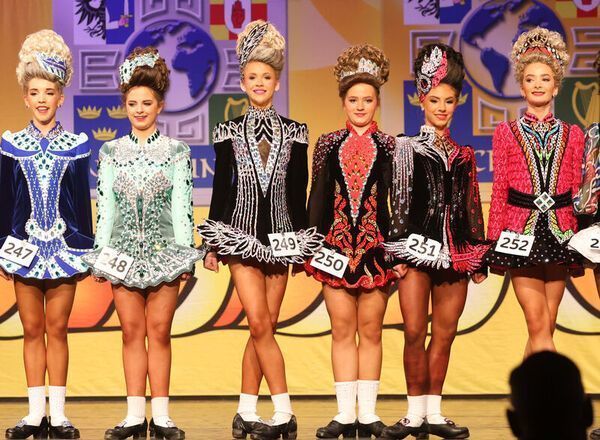Sad news once again to pass on from the world of Irish folk music with the April 3 passing of Michael “Jesse” Owens. Born in Dublin in 1935, Owens was a ballad singer, guitarist, humorist and storyteller,
who, from the 1960s onward, made a real mark on the world of Irish music, particularly in the United States. His loss marks an important moment in the closing of an era.
Owens was born Michael Francis Owens, the oldest of six children. His father nicknamed him “Jesse” after the athlete who won four gold medals at the 1936 Olympic Games and his mother bought him his first guitar when he was 16, just shortly he joined the Dublin Fire Brigade, where he became known as the “singing fireman.”
In those days, Owens performed regularly with Anne Byrne, with whom he made an album in 1966. At that time he was also a regular on RTÉ, most notably on a show called “Ballad Sheet,” hosted by Shay Healy. “Ballad Sheet” featured many of the day’s important names who would go on to inspire the next generation of singers. Owens’s performances there made a particular impression on a young Christy Moore, who, in his autobiography “One Voice: My Life in Song,” acknowledged the example Owens set.
[Michael Owens performing in 2010.]
“Looking back across the music that was to influence me,” Moore wrote, “I would put Sweeney’s Men into the pot with the Clancys, The Dubliners, Jesse Owens, Joe Heaney, Andy Rynne, The Grehan Sisters, John Reilly, Hamish Imlach, The Watersons, Ewan McColl and Woody Guthrie. My singing was effected and affected in some way by all these sounds, and others too, on and on until I woke up one morning with a voice and style that suited me and I no longer sought influence but rather sang to my heart’s content with little worry about what others might think.”
In a 2020 concert in Ireland, Moore, with Owens in attendance, expanded on the influence Owens had on his musical development.
In 1966, a visit to New York led to a development that changed Owens’s life: work as a ballad singer at the John Barleycorn Pub. Early success inspired him to relocate to New York and set up a long term residence at the Barleycorn alongside accordionist Paddy Noonan. Owens was the first real pub ballad singer and his popularity with Noonan led to the 1967 recording “Live Irish Party at the Barleycorn.” The album’s liner notes provide insight into Owens’s growing renown at that time, saying that he had “appeared on Pat O'Brien's St. Patrick's Day television special along with Paddy Noonan” and was “a popular performer in Ireland and on Irish TV shows.”
From the late 1960s onward, Owens performed regularly with his friend, the great button accordionist James Keane. Together, the two were mainstays at the Barleycorn but also performed widely, both around New York and also in venues around the U.S. and Canada. In 1970, their popularity helped them find feature in TV station WOR’s St. Patrick's Day special "Up The Irish,” which included Pat O'Brien, the McNiff dancers, and others. In 1972, the two recorded “A Musical Salute to the McNulty Family” with Paddy Farrell & Tim Geraghty.
He worked with many musical partners over the years. One of his most important, more recent partners was fiddle player (and Rockland County’s own) John Reynolds, with whom he played for over 20 years.
Owens had an inherent feel for the power of television and found himself on American network television many times, his most notable appearance being “The Saint and the Shamrock,” a seasonal special produced by the CBS in which he sang ballads and guided viewers through the stories of Ireland and Saint Patrick.
Over the years, Owens performed in many notable venues, among them Madison Square Garden. the Royal Albert Hall, and Carnegie Hall, where he appeared seven times. His first time at Carnegie was as part of the annual "Irish Freedom Concert” in 1970, with Pete Seeger, the Clancy Brothers, Joe Heaney, Dominic Behan and James Keane. The following year, Owens, Keane, the Wolfe Tones, the McNiff Dancers, and the O'Carolan Minstrels were featured artists.
Owens performed widely in New York’s Irish community and was one of its best known singers. He was a beloved entertainer at the Warren Hotel in Spring Lake, N.J., where he played summers for 15 years.
Owens’s long, fruitful musical career was archetypical of that era’s ballad singers, blazing a professional trail that seems commonplace today. It’s an important and noteworthy position to have achieved. Owens’s funeral was held at St. Patrick’s Cathedral last Wednesday, April 9. There, James Keane, played “An Chúilfhionn,” a centuries-old Irish air, in tribute to his dear friend. Sincerest condolences to Owens’s family and friends from all of us here at the Echo. He will be missed.







